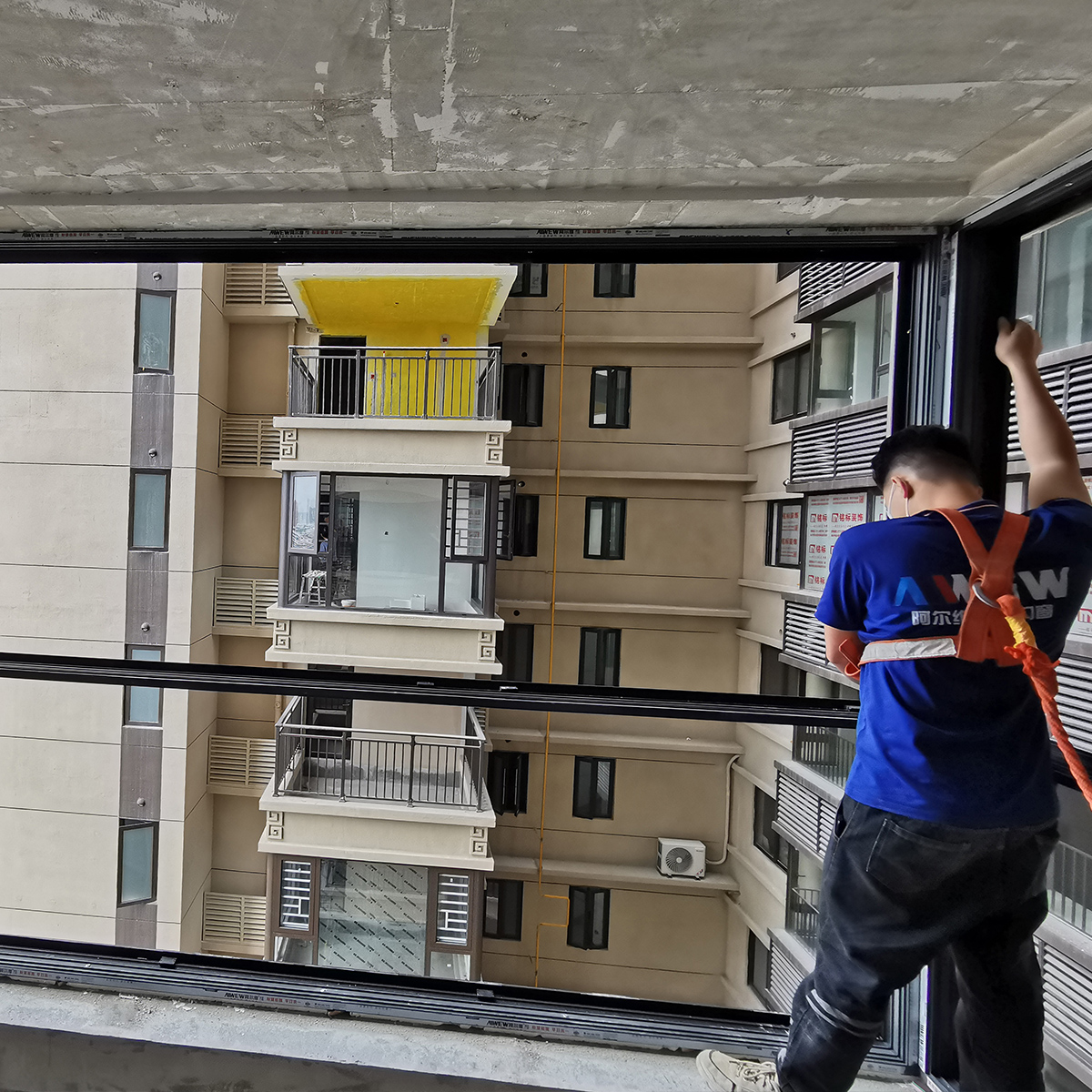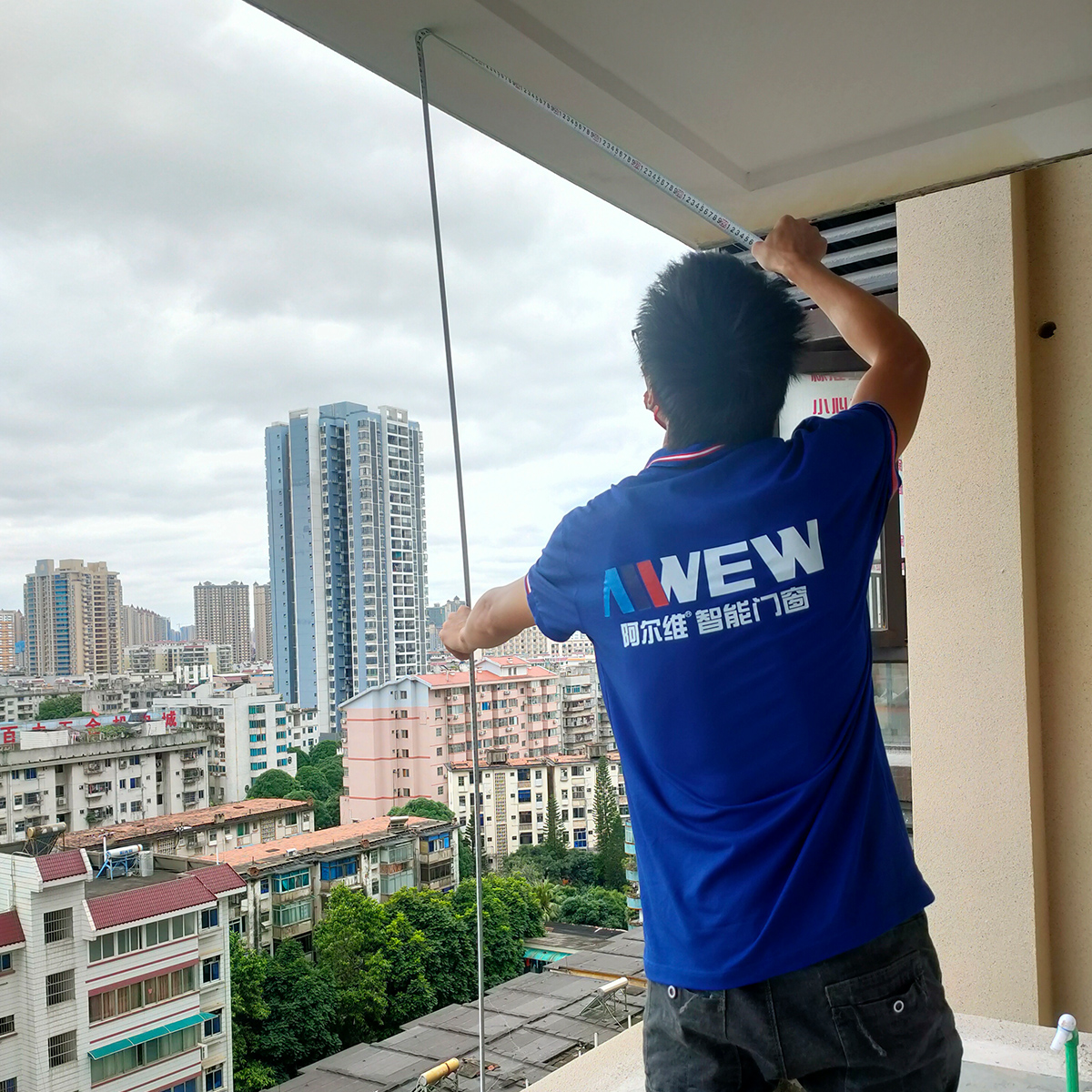The quality of door and window installation not only directly affects its function and aesthetics, but also the safety and durability of the home or building. From measurement to fixing, from sealing to debugging, every link requires professional skills and a rigorous attitude. Mastering the correct installation method is the key to ensuring that doors and windows achieve perfect results. The following is a detailed analysis of the full process of door and window installation professional skills.
Full preparation before installation
Before the formal installation of doors and windows, meticulous preparation is essential. The first is accurate measurement. Use professional measuring tools such as laser rangefinders and levels to measure the width, height, and diagonal length of the door and window openings multiple times. When measuring, please note that the opening size should be 15-20 mm larger than the actual size of the door and window to reserve the installation gap to ensure that the door and window can be installed smoothly and evenly stressed on all sides. At the same time, check the flatness and verticality of the wall at the opening. If the deviation exceeds 5 mm, the wall needs to be leveled or corrected to avoid deformation and loose closure of doors and windows after installation due to uneven walls.

Secondly, prepare the materials and tools required for installation. In terms of materials, in addition to the main body of the doors and windows, auxiliary materials such as expansion bolts, sealants, foam glue, and waterproof mortar need to be prepared. Tools include electric drills, screwdrivers, hammers, wrenches, levels, tape measures, etc. Ensure that all materials and tools are of qualified quality and sufficient quantity to avoid the installation progress and quality being affected by shortage of materials or inappropriate tools during the installation process. In addition, unpack the door and window products, check whether the model and size are consistent with the order, check whether there are scratches and deformations on the surface of the doors and windows, and whether the hardware accessories are complete and flexible. If any problems are found, communicate with the supplier in time to solve them.
Professional operation during installation
The first step in installing doors and windows is to fix the door and window frames. Put the door and window frames into the opening, use wooden wedges or pads to temporarily fix them at the four corners and the middle of the frame, and adjust the horizontality and verticality of the door and window frames by using a level and a vertical line to ensure that the error does not exceed 2 mm. After the horizontal and vertical adjustments are in place, use expansion bolts to fix the door and window frames to the wall. The number and spacing of expansion bolts should comply with the installation specifications. Generally, there should be no less than 3 on each side, and the spacing should not exceed 600 mm. When fixing, the bolts should be tightened but not too tight to avoid deformation of the window frame. They can be tightened gradually in multiple times.

After the door and window frames are fixed, install the door and window sashes. For casement windows, install the hinges at the corresponding positions on the door and window frames and sashes to ensure that the hinges are firmly installed and open flexibly; for sliding windows, install the pulleys and adjust the pulley height so that the window sashes can be pushed and pulled smoothly and are well sealed with the window frame. During the installation process, pay attention to protecting the surface of the doors and windows to avoid scratches or collisions. If tools such as screwdrivers are used, soft cloth can be placed on the contact parts.
Sealing is an important part of door and window installation, which directly affects the waterproof, sound insulation and thermal insulation performance of doors and windows. Fill the gap between the door and window frame and the wall with foam glue. The foam glue should be filled from the bottom of the gap and gradually upward to ensure that it is full and has no voids. After the foam glue solidifies (usually 24 hours), use a utility knife to cut off the excess part so that it is flush with the surface of the door and window frame. Then apply sealant on the outside of the junction between the door and window frame and the wall. The sealant should be even and continuous, and the thickness should be controlled at 3-5 mm to ensure a tight seal to prevent rainwater leakage and air infiltration.

Inspection and debugging after installation
After the doors and windows are installed, they must be fully inspected and debugged. First, check the appearance of the doors and windows to see if the surface is flat and smooth, whether there are scratches or stains, and whether the sealant is even and beautiful. Then test the opening and closing functions of doors and windows. Casement windows should be flexible to open and the sealing strips should fit tightly after closing. Sliding windows should be smooth to push and pull without jamming, and the locking device should be able to be used normally and firmly and reliably. Check the hardware accessories of doors and windows, such as handles, locks, pulleys, etc., to ensure that they are firmly installed, smooth to use, and without abnormal noise.
At the same time, conduct a waterproof test. Simulate rainfall on the outside of doors and windows to observe whether there is leakage in the room, and focus on checking the junction between the door and window frames and the wall, the sealing parts of the window sashes, and other leakage-prone points. If leakage is found, find the cause in time and repair it. In addition, check whether the ventilation and lighting effects of doors and windows meet the design requirements. If there are any problems, the position or opening angle of the door and window sashes can be fine-tuned.
The installation of doors and windows is a highly professional job, and every step needs to be strictly carried out in accordance with specifications and standards. Only through sufficient pre-installation preparation, professional installation operations, and meticulous post-installation inspection and debugging can the installation of doors and windows be ensured to achieve perfect results and provide a safe, comfortable, and beautiful use experience for homes or buildings. By mastering these professional skills, both professional installers and users with hands-on skills can better complete the door and window installation work and maximize the value of doors and windows.








